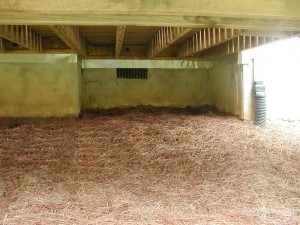Eastern North Carolina Important: COVID-19 Announcement.
It is truly shocking how many homeowners don’t know that water is the cause of most foundation problems. Water can eat away the soil that your home rests on or rot your wooden supports. It can even cause some types of soil to expand and apply great amounts of force, which can cause severe cracks in your foundation. As is true in almost every other aspect of home improvement, water damage is your enemy. Fortunately, there are steps you can take to keep yourself from needing to spend thousands of dollars on foundation repair.

It might seem like an obvious necessity, but a common feature of houses in need of foundation repair is their lack of any drainage strategy. Any foundation without some kind of drain isn’t going to last very long. One well-known type of drain, especially popular in older homes, is the sump pump. It works by using slopes that, by the power of gravity, direct water into a collecting area, or sump. The sump pump then, as you might imagine, pumps water out of the sump into an area at a safe distance from your home. It’s an effective solution, but its reliance on electricity leaves it vulnerable during power outages, which are not uncommon during storms.
In the modern era of efficiency, draining your foundation sump into the sewer lines has become commonplace. This kind of drainage plan replaces the pump with a pipe that connects directly to the sanitary sewer system. During strong rainstorms, this system is rendered useless by sewer backups.
While drainage is an important part of keeping you from paying thousands for foundation repair, it’s only one aspect of the solution. Your first priority should be keeping water damageaway from your drains. If they are seeing constant use, then something is wrong. Ideally, you want them to see as little use as possible, as there is always the chance for backups, power outages, and mechanical failure. You should think of them as a secondary line of defense in the war against moisture, only to be used when the first defenders aren’t enough.
One of those first defenders is your gutters. It’s hard to imagine that these thin, curved sheets of metal do all that much for your home, but they are instrumental in avoiding foundation damage. Instead of having water fall off the sides of your home, your gutters gather it and direct it to areas where the sloping of the ground will keep it far away from your foundation. Without that odd-looking scaffolding around your home, there would be more water pooling around your walls, which means more work for your drains.
Even more important than your gutters is the sloping of the ground on your property. If your land naturally drives water damage into pools around your home, then you are doomed to require foundation repair. Your land needs to work for you, not against you. The simplest, most cost effective addition to your water drainage plan is to slope the ground encompassing your home in a way that diverts excess water away.